A New Chapter in Sleep Studies
Bringing the Sleep Lab home
Sleep is inextricably tied to brain health. For some concerned families, a sleep study can help reveal a condition that’s impacting their child’s behaviour and development. For others, it might pinpoint a life-threatening diagnosis.
Twenty years ago, respirologist Dr. David Wensley developed the Sleep Lab at BC Children’s Hospital. It was, and still is, the province’s only service that monitors sleep to diagnose disorders in children—disorders like sleep apnea, insomnia, and potentially lethal conditions like congenital central hypoventilation syndrome. Over the years, the Sleep Lab has expanded to perform almost 500 studies per year, and has helped thousands of kids across BC. Now, the Sleep Lab team is working towards an ambitious new goal: conducting sleep studies in patient homes.
“With an in-hospital sleep clinic, kids are in an unfamiliar environment with a jumble of wires attached to them,” explained Dr. Wensley. “Then they’re told to sleep like they normally do. It isn’t an easy task.” But taking sleep studies from a hospital room to a bedroom is no easy task either. Children are physiologically different from adults, and this includes how they sleep. Existing strategies and equipment used for adult at-home sleep studies simply do not translate.
There’s a lot to work out: can we use depth sensing cameras to measure breathing? What would a wearable, wireless EEG look like? And how can we repurpose existing at-home sleep devices?
“We know devices like Fitbits underrepresent children’s sleep,” said Dr. Wensley. “Right now, we’re recalibrating these devices to work for kids.” The progress taking place has been incredibly promising. While Sleep Lab has been transformational in its own right, Sleep Lab at Home will have a new, exciting impact on BC families who have historically needed to make a long trek—or flight—to the hospital for a sleep study.
A belt that’s got your back
Dr. Lena Xiao, a respirologist with the Sleep Lab, is pursuing novel therapies and care pathways for children who need to use breathing machines while sleeping. One area of her work even asks the question: what if some children didn’t need to use a breathing machine at all?
“I’m evaluating a positional sleep belt for children,” Dr. Xiao explained. “This is specifically for kids with sleep apnea who have breathing issues while on their back. The sleep belt has a cushion that prevents the child from sleeping on their back, ensuring they breathe normally throughout the night.” While simple, this could have an incredible impact on families dealing with sleep apnea. “It’s not easy to get a toddler to use a breathing machine, as you can imagine,” said Dr. Xiao. “But sleep health is necessary for brain health. I’m hoping this new device can help families who are struggling.”

